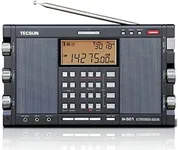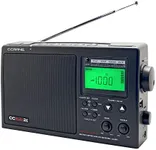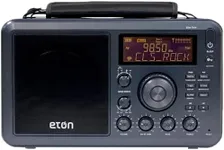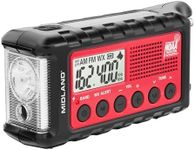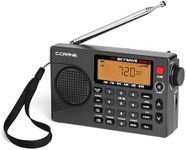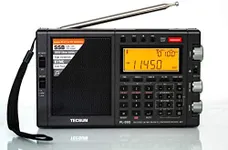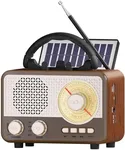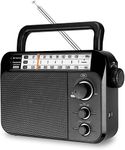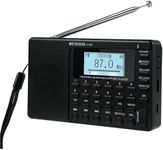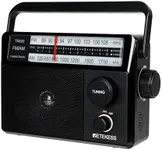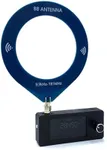Buying Guide for the Best Shortwave Radios
Choosing the right shortwave radio can be a rewarding experience, especially if you enjoy listening to international broadcasts, amateur radio operators, or emergency communications. To make an informed decision, it's important to understand the key specifications and features that differentiate various models. By considering your specific needs and preferences, you can find a shortwave radio that best suits your listening habits and technical requirements.Frequency CoverageFrequency coverage refers to the range of frequencies that the shortwave radio can receive. This is important because different stations broadcast on different frequencies. Shortwave radios typically cover frequencies from 1.6 MHz to 30 MHz. Some models also include additional bands like AM, FM, and Longwave. If you want to listen to a wide variety of international broadcasts, look for a radio with broad frequency coverage. For casual listening, a basic range might suffice, but for more serious hobbyists, extensive coverage is essential.
SensitivitySensitivity is the radio's ability to pick up weak signals. This is crucial for shortwave radios because many broadcasts come from distant locations and may be weak. Sensitivity is usually measured in microvolts (µV). Radios with lower sensitivity values (e.g., 0.5 µV) can detect weaker signals better than those with higher values (e.g., 1 µV). If you live in an area with a lot of radio interference or want to pick up distant stations, a radio with high sensitivity is important. For general use, moderate sensitivity may be adequate.
SelectivitySelectivity is the radio's ability to separate closely spaced signals. This is important when multiple stations are broadcasting on nearby frequencies. Good selectivity ensures that you can clearly hear the station you want without interference from others. Selectivity is often measured in kilohertz (kHz). Radios with narrower selectivity (e.g., 2 kHz) can better isolate signals than those with wider selectivity (e.g., 6 kHz). If you plan to listen in crowded frequency environments, look for a radio with high selectivity. For less crowded areas, standard selectivity should be sufficient.
Tuning MethodsTuning methods refer to how you change the frequency on the radio. Common methods include analog tuning, digital tuning, and direct frequency entry. Analog tuning uses a dial and is often less precise but can be more engaging for some users. Digital tuning allows for more precise frequency selection and often includes features like memory presets. Direct frequency entry lets you input the exact frequency you want to listen to. If you prefer ease of use and precision, digital tuning or direct frequency entry is ideal. For a more traditional experience, analog tuning might be more enjoyable.
PortabilityPortability refers to the ease with which you can carry and use the radio on the go. This is important if you plan to use your shortwave radio while traveling or outdoors. Portable radios are typically smaller, lighter, and battery-operated. Larger, desktop models may offer better performance but are less convenient to move around. If you need a radio for travel or outdoor use, look for a compact, lightweight model with good battery life. For home use, a larger, more powerful radio might be a better choice.
AntennaThe antenna is a crucial component for receiving signals. Shortwave radios can come with built-in antennas, external antennas, or both. Built-in antennas are convenient but may not provide the best reception. External antennas can significantly improve signal quality and range. Some radios allow for the connection of additional external antennas. If you are in an area with weak signals or want to maximize reception, consider a radio that supports external antennas. For casual listening in areas with strong signals, a built-in antenna may be sufficient.
Additional FeaturesAdditional features can enhance your listening experience and convenience. These may include features like SSB (Single Side Band) for listening to amateur radio operators, synchronous detection for reducing fading and interference, and built-in recording capabilities. Other useful features might include alarm clocks, sleep timers, and backlit displays. Consider what additional features are important to you based on how you plan to use the radio. For example, if you are interested in amateur radio, SSB capability is essential. For general listening, features like a sleep timer or backlit display might be more relevant.

